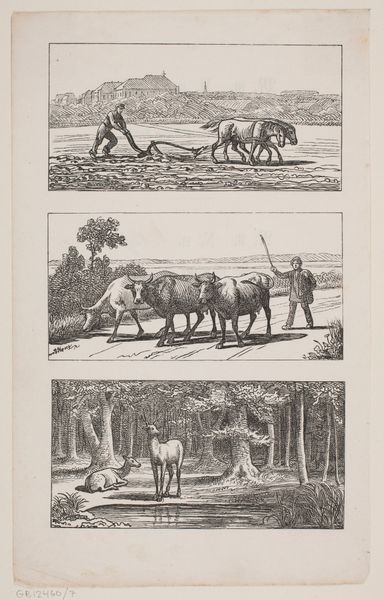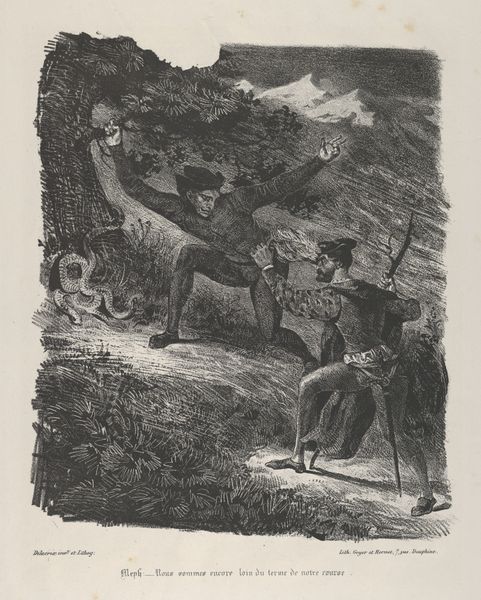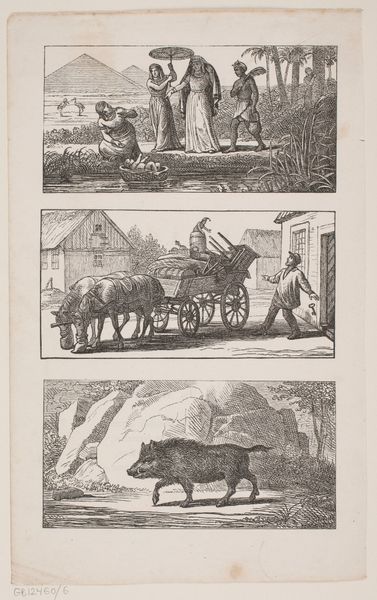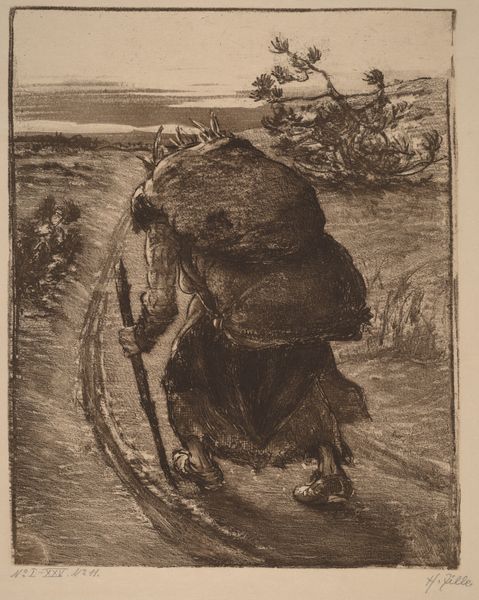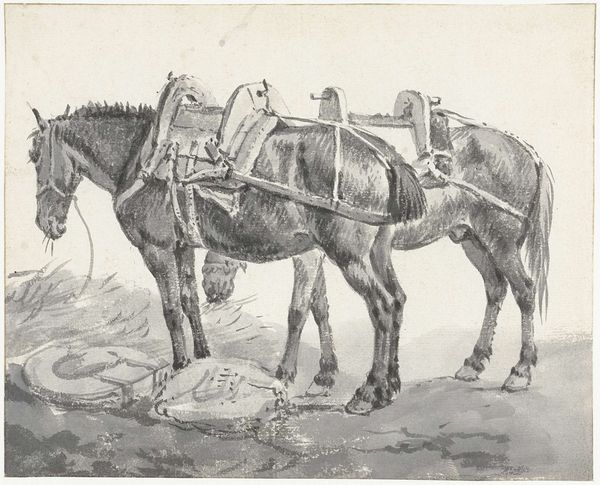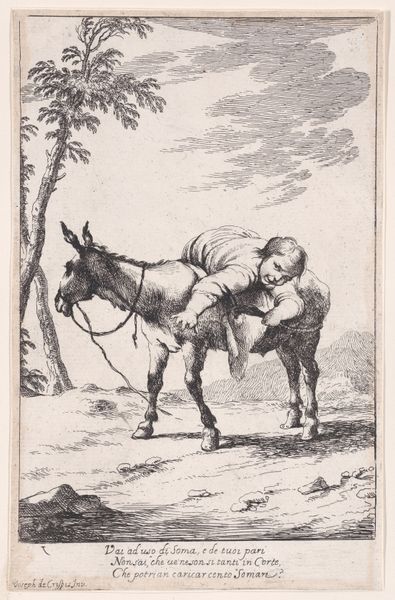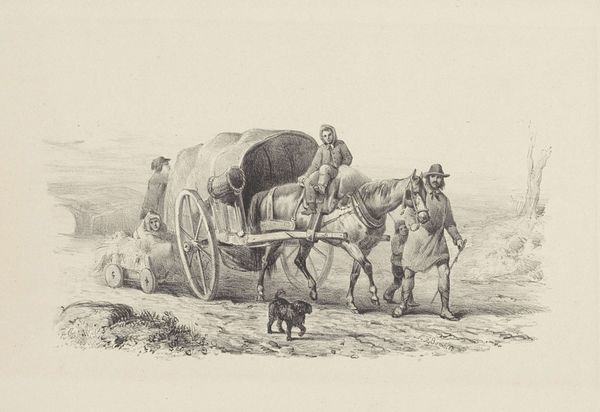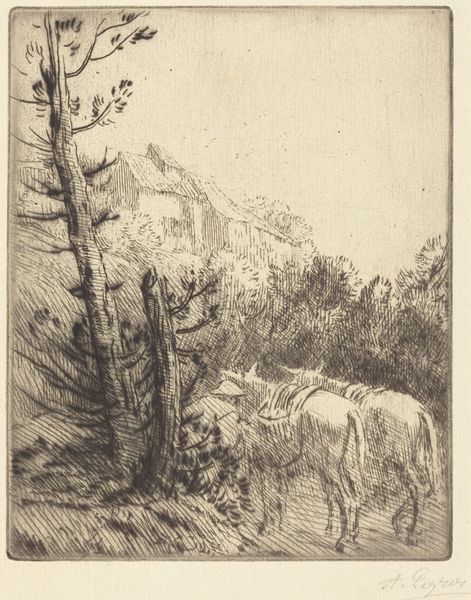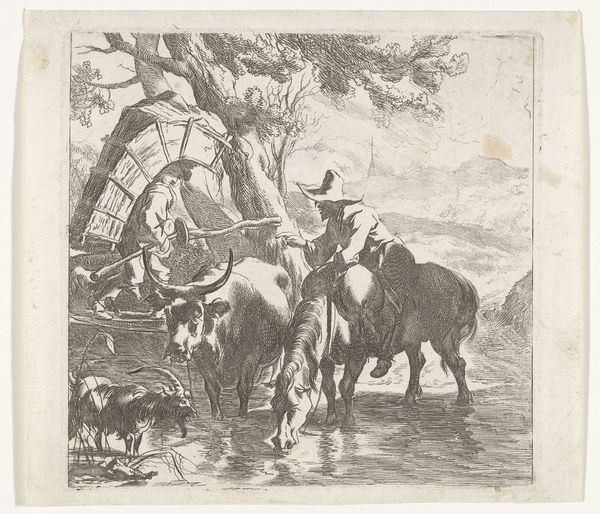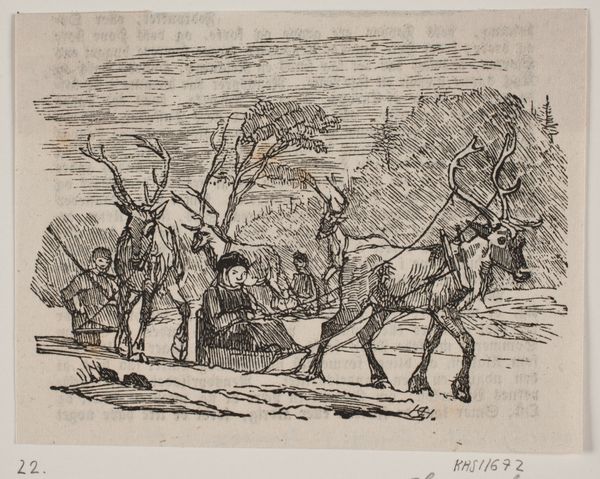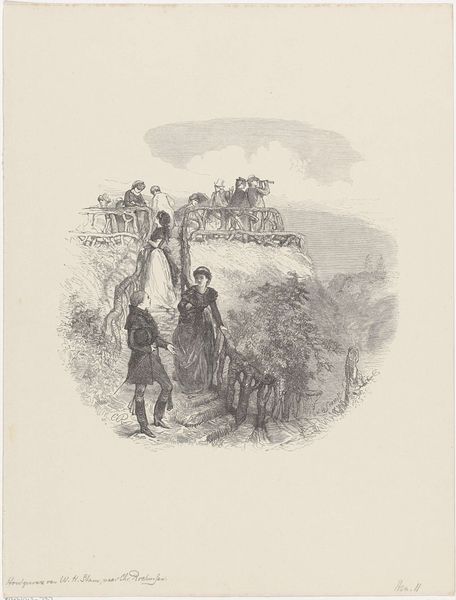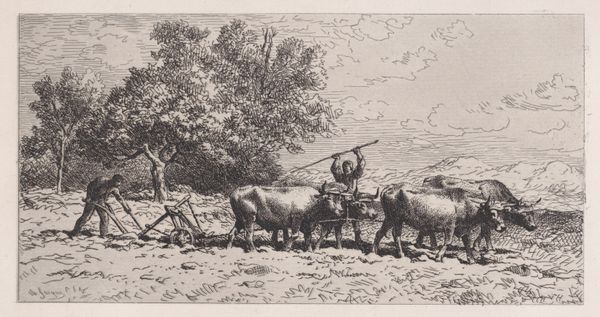
drawing, print, engraving
#
drawing
# print
#
landscape
#
genre-painting
#
engraving
#
realism
Dimensions: Sheet: 6 7/8 × 5 11/16 in. (17.5 × 14.5 cm) Image: 3 15/16 × 3 1/8 in. (10 × 8 cm)
Copyright: Public Domain
Editor: Here we have an engraving, titled "Saddled donkeys drinking water," dated to the 19th century. It shows a realistic landscape with working animals. It almost feels like a snapshot, very unassuming and serene. How might we interpret its context, and what stands out to you? Curator: Well, engravings like this one were widely accessible during the 19th century, serving as both decoration and a form of visual communication for a growing public. It’s a genre scene—observe how it portrays a mundane activity, elevated to art. Who do you think the primary audience might have been? Editor: Perhaps a middle-class audience, aspiring to a lifestyle connected to the countryside? The details, like the donkey's saddle, seem quite ordinary, appealing to a relatable sense of labor. Curator: Precisely. This realism served a social function. It mirrored and, in a way, validated their everyday experiences. It avoids idealized pastoral tropes. Think about the political implications—whose lives were deemed worthy of representation, and who was excluded? How do museums affect this kind of imagery? Editor: That's interesting; this unidealized view could almost be considered revolutionary because most art idealized labor at the time. Museums showcasing this piece seem to be validating common life, maybe democratizing art appreciation? Curator: Museums displaying artwork contribute to these evolving values. Genre scenes become valued documents rather than secondary art forms. Editor: So, beyond just an image of donkeys drinking, it's a representation, maybe even a quiet validation, of ordinary lives elevated through art and its socio-political background. I hadn't considered that aspect so profoundly before! Curator: And the printing methods employed, accessible at that time, reflect that very aim. Everything down to materiality played a part in the rise of genre painting’s prevalence and democratization in the period.
Comments
No comments
Be the first to comment and join the conversation on the ultimate creative platform.
